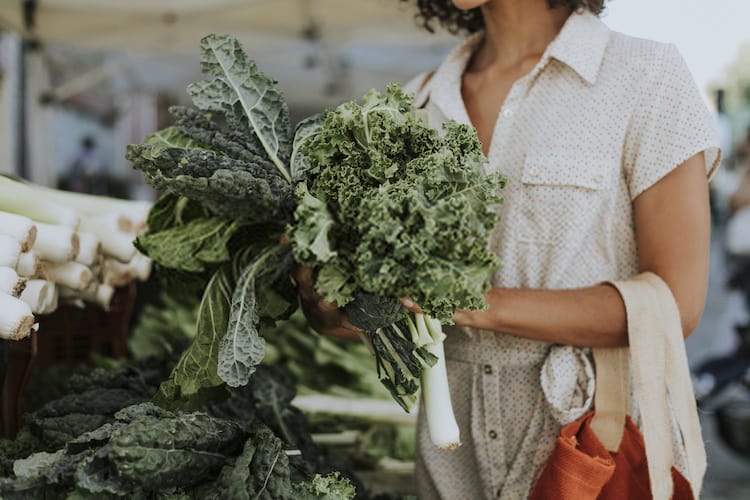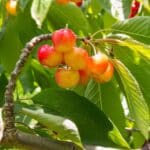In today's guide, we will be looking at how to harvest kale so it keeps growing. Trust me, the steps are easy and you're going to enjoy it.
Highly nutritious and rich in vitamins and minerals, kale (Brassica oleracea) is a fast-growing cold season loving green that belongs to the cabbage family.
This leafy vegetable grows fast to reach maturation within a short period and supplies an early bountiful harvest of beneficial evergreen foliages
We all want our kale garden to provide for as long as possible, so you're going to learn how to harvest kale without killing the plant.
Read on to find out the best harvesting practices for a continuous supply of these fantastic greens and the best way to maximize your kale harvest.
Read Also: Worst Things to Plant With Kale
Table of Contents
When to Harvest Kale
While trying to find out how to harvest kale so it keeps growing, it's also good to know the best time to harvest kale, so you don't end up killing the plant before maturation.
So, how do you know when to harvest kale?
Kale is a fast-growing leafy green that has a very long harvesting period.
When to harvest kale is dependent on when or how you planted it and how you plan to prepare it. It takes a shorter period for baby kale to mature for harvest than it does for mature kale leaves (almost the size of your hands) to be ready.
Baby kale leaves are usually small-sized and tender to touch, if your interest is picking baby kale leaves, you can harvest and enjoy them just a few weeks after direct planting.
Usually, the first mature kale leaves are ready to be harvested about 30 days after planting. A good rule of thumb states that the best way to tell if kale is ready for harvest is when they are about your hand's size.
Garden transplants are usually ready for their first harvest after three months or within 50 to 55 days of planting because they have a head start from seeds. Meanwhile, full-sized Plants grown directly from seeds require 70 to 80 days after planting to reach a mature size.
Also, the time and season of the year and climatic conditions affect the harvest time. Kale grows best in cold weather from early spring to early winter when temperatures are below 80 degrees Fahrenheit. It can tolerate freezing, so it favors temperatures that go below.
Still, the plant grows more slowly when it is below 32 degrees to 20 degrees Fahrenheit (-6° C) hence why it is called winter kale, and the frost sweetens the flavor of kale plants, but a few series of extreme colds might blacken the leaves and eventually kill the plant.
During the whole part of summer, many gardeners have noticed a decline in the taste of larger kale leaves from the sweet taste to a bitter flavor. To prevent this, it’s best to harvest leaves as younglings during the hot seasons.
In fall and spring, you can allow the leaves to grow to full size. Harvesting can continue as long as the kale plant keeps putting out leaves; in frost-free climates, you can improve your kale all-year-round!
How to Harvest Kale So It Keeps Growing
Now that you already know the best time to harvest kale, here's how to harvest kale without killing the plant.
The only way kale will grow up firm and healthy to last multiple pant cycles is by proper harvesting. There is the right method of harvesting kale and the wrong method as well. For a bountiful harvest, continuous growth, and production of leaves, you should consider harvesting kale the right way.
Always have in mind if you collect it the wrong way, the plant will stop growing.
The leaves of the kale plant usually sprout out on a stem. The leaves then grow from the top of the stem, and the stem will continue to extend in height and produce more greens through the plant's lifecycle.
So, what is the right method? It is essential always to harvest the more significant, older leaves that are closest to the bottom of the stalk first and be sure to take off each leaf along with its stem one by one.
As long as you continue to harvest kale in this mode, it will continue to extend in height as it produces a new set of evergreen leaves.
But if you harvest the leaves of the plant off from the top, or cut the smaller leaves growing in the center bud, you will stunt the plants' growth and likely kill it!
The whole idea behind it is to leave the lower, central leaves on the plant along with the bud. Once you leave that center area at the top of the stem untouched, the plant will produce more leaves.
Read Also: Best Time to Pick Banana Peppers
Picking Kale
Usually, when to pick kale depends on when it is planted. Mature kale plants share similar looks with that of little palm trees,
Learning how to pick kale the right way will ensure you an ever productive and fresh kale plant; you can add the tender leaves harvest from baby kale as a sumptuous salad meal or side dish
Meanwhile, the more abundant greens can be used in preparing stews, soups, or just cooked with several other greens.
Kale could also serve as a garnish to enhance the nutritional benefit of a meal; for this, you can use a small or substantial part of the kales harvest, based on your preference.
It is always advisable to plan before planting kale so you don't have more than you can use, Succession is also desirable, so your kale reaches harvest in batches instead of all at the same time.
Note: As you harvest, ensure to remove and discard yellowish looking leaves- this means they are old and damaged; removing them will encourage healthier and stronger leaves.
You can cut them off by simply plucking them where the leaf or stem meets the main stem and compost yellowing or damaged leaves. Doing this will also encourage the plants to produce more healthy leaves and serves as an indicator that you may not be harvesting fast enough.
Here's how to harvest kale so it keeps growing in 11 simplified steps.
Now, to harvest kale, you either use a gardening shear or make use of your fingertips.
- Harvest Kale when the leaves are about the size of your hand.
- To harvest, cut along the base
- If you wish for your kale to keep growing, don't cut the root of the plant
- Harvest the largest and oldest leaves first
- Avoid picking the central bud ( it is the production center for more leaves)
- Pick about a fistful per harvest
- Harvest regularly to promote growth (return every 5-7 days)
- For a sweeter test consider waiting until after the first frost
- While harvesting, remove yellowish damaged leaves
- For an extended harvest, shield your kale from the weather with row covers
- After collection, ensure to cook or store properly
Conclusion
When it comes to harvesting, kale is a straightforward and friendly plant. You can harvest it early (baby kale) to enjoy soft, crunchy leaves or wait until the leaf is about your hand's size and a fistful to cook in soups and stews.
As a rule, to attain a maximum kale harvest, timing, and weather condition matters when harvesting, it depends on when you plant the kale and what the weather in your area says.
Hopefully, you have learned how to harvest kale so it keeps growing and also discovered the most profitable season for growing kale.






Leave a Reply